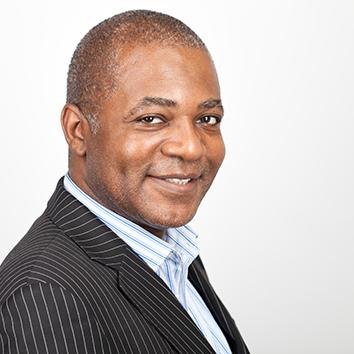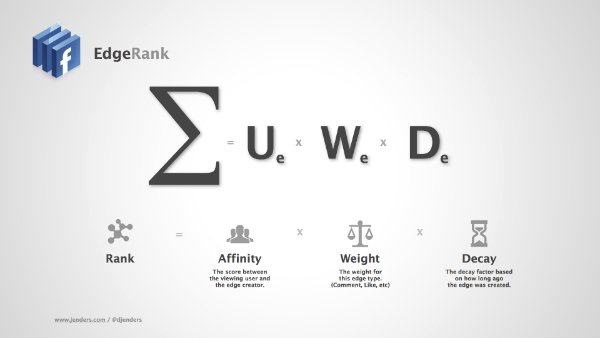Did you know, that only 40% of the time people spend on Facebook is directed at the Newsfeed, whereas only 12% this spent on brand pages and main profiles? The algorithm that makes this possible was known as “EdgeRank”. Edgerank was the name given to Facebook’s news feed algorithm a couple of years ago, and many SEO and web specialists still refer to it as as EdgeRank in the present. Confused? While the name has been officially declared redundant by Facebook, the algorithm has been vastly improved, and the underlying framework is still present.
Wikipedia says, According to MarketingLand, Facebook stopped referring to its feed prioritisation algorithm as EdgeRank internally in 2010/2011, and so the term may be considered obsolete now – other than as a useful shorthand for “Facebook’s feed prioritisation algorithm”. According to edgerank.net, EDGERANK is like a credit rating it’s invisible, it’s important, it’s unique to each user, and no one other than Facebook knows knows exactly how it works.
Edge rank in the old days consisted of three main parts, two of them were actually relevant for marketers. The three main parts to EdgeRank were called affinity, weight and time decay. These three factors now comprise approximately 0.00003% of the total factors that Facebook actually considers. The social network has since replaced this with a more machine learning-based approach which takes into account approximately 100,000 factors.
Facebook recently held a small workshop to explain their latest changes to the news feed. Here are a few important key takeaways:
- There is still an algorithm determining the news feed
- New Story Bumping Signal
- New Last Actor Signal
- Future New Chronological by Actor Signal
- There will not be a purely chronological change
It’s obvious that Facebook has been improving its news feed algorithm over the last couple of years, while ‘Edgerank’ as it used to be known has changed and is actually referred to as the machine learning base algorithm, maybe it’s just easier to keep referring to it as Edgerank, until Facebook comes up with a better name. The fact that the new algorithm is extremely complicated will only present challenges for Facebook page owners and brands. There is no magic formula, publishers need to understand their audience and their fans and create engaging content that shareable.
 Image credit via Findability and Postrocket
Image credit via Findability and Postrocket
Read More:
mastering the usajobs resume builder
what are some long-term consequences of not learning to save while you’re young?
how to easily navigate your ziprecruiter login for job seekers and employers?

Hayden Richards is Contributor of IntelligentHQ. He specialises in finance, trading, investment, and technology, with expertise in both buy-side, sell-side. Contributing and advising various global corporations, Hayden is a thought leader, researching on global regulatory subjects, digital, social media strategies and new trends for Businesses, Capital Markets and Financial Services.
Aside from the articles, interviews and content he writes for IntelligentHQ, Hayden is also a content curator for capital markets, analytic platforms and business industry emerging trends. An avid new media explorer Hayden is driven by a passion for business development, innovation, social business, Tech Trading, payments and eCommerce. A native Trinidadian, Hayden is also a veteran, having served with the Royal Air Force Reserves for the past 10 years.
Follow Hayden on Twitter @HaydenARichards, linkedin.com/haydenhrichards and http://www.scoop.it/u/hayden-richards










